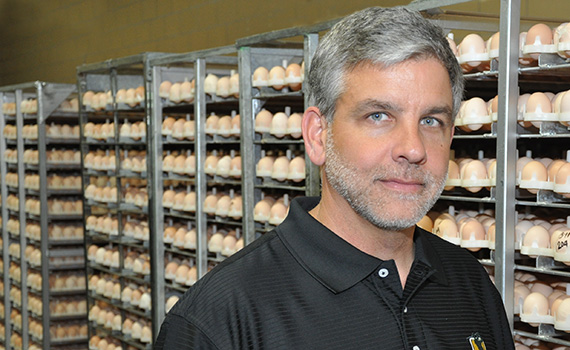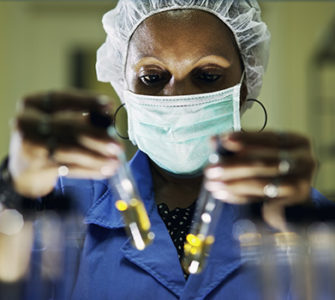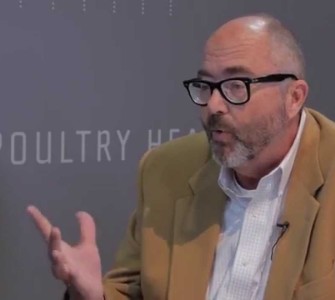Sanderson’s Phil Stayer: ‘Sustainability is really nothing new for poultry’
Phil Stayer, DVM, is a no-nonsense guy with a low threshold for trendy buzzwords and catch phrases.
So when the head veterinarian at Sanderson Farms hears people bat around terms like sustainability, carbon footprint, cradle to grave, renewable resources or even animal welfare, he looks at them as if they just discovered fire.
It’s not that he considers these concepts unimportant. Stayer just thinks they’ve been part of the US poultry industry all along, even if profitability was the primary driver.
“To me, sustainability is really nothing new. What makes a poultry company the most money also happens to be doing what’s best for the bird, for the land and, yes, for sustainability,” he says. “And certainly, there’s always room for improvement.
“Sustainability involves getting the best that we can for our bird health — doing whatever it takes to keep the birds healthy with whatever tools we have available. And then, hopefully, finding ways to do the most with the least to maximize our profitability.”
Reducing carbon footprint
Maintaining good intestinal health is particularly important for sustainability, he says, because the condition of the gut ultimately determines a flock’s growth rate and feed conversion.
“You want a low carbon footprint?” Stayer asks, rhetorically. “Maximize your feed efficiency; avoid waste; find ways to be more efficient.
“Most of a poultry operation’s cost is feed,” he adds. “If we can reduce that volume and expense with better feed conversion — and that’s an area where we can always improve — that’s less input, fewer trucks you’ve got to put on the road to bring corn in, fewer trains, less land in production. So having good feed conversion is going to reduce a lot of energy consumed. To me, that’s huge — feed is the giant that casts the longest shadow.”
7-day mortality
He should know. Sanderson Farms places more than 9 million birds a week at its farms in Mississippi, where the company is headquartered, and in Texas, Georgia and North Carolina. Half of the birds are grown to 9.0 lb in 60 to 63 days; the rest are raised to 6.75 lb in about 50 days.
Stayer and his two production vets — Drs. David French and Erin Riley — spend most of their time in the field, reviewing the health status of all farms. They also get some help from the company’s C-suite.
“Our upper management — all the way up to our CEO — looks at our 7-day mortality,” he says. “They expect our first-week mortality to be less than 0.75% by the house — not by average, but by the house. And if any house is over that target, there has to be an explanation.
“I think that’s been a big secret to our success — getting the birds off to a good early start and positioning them for a strong finish,” Stayer continues. “That begins in the hatchery — how you incubate them, how you pull the hatch, how you make the eggs set, the chemical sanitation. We spend a lot of energy and effort to keep it as clean as we can so that we can put out a big chick without a whole lot of bacterial growth.”
Big birds, big challenges
But keeping the broilers healthy and efficient for up to 63 days presents challenges as well, particularly in the summer.
As with most farms in the Deep South, Sanderson’s biggest hurdle is hot weather, compounded by the buildup of body heat in the houses, especially on farms with large birds. Stayer says the company generally takes fewer big birds to market during the summer — typically 0.5% less than its 49-day-old birds — but Sanderson makes up for it during the winter months, which Stayer calls the “best season.”
Still, maintaining good gut health and feed conversion is a year-round concern and paramount to the operation’s success and sustainability.
“Intestinal health is where I focus most of my time, whether we’re designing programs to control the ubiquitous coccidiosis — that’s our biggest nemesis — and the bacterial overgrowth that occurs with that,” he says.
Of the major Eimeria organisms that can cause coccidiosis, Stayer describes Eimeria maxima as his “biggest feed thief” — one that also predisposes birds to Clostridium perfringens infection and necrotic enteritis.
And coccidiosis is not getting any easier to control, he says. Despite the availability of more than a dozen in-feed antimicrobials in the US and a half dozen vaccines, managing E. maxima and other coccidial organisms — E. acervulina, E. tenella, to name a few — has become yet another exercise in sustainability.
Like similar medications used in human and companion-animal medicine, antimicrobials for poultry and livestock can lose effectiveness when used improperly or for extended periods. Furthermore, some medications perform better at different times of year or at different growth stages.
Fewer weapons
So on paper, it may look like the poultry industry has a deep war chest of anticoccidials. But when producers factor in other variables — the birds’ heat intolerance when receiving some synthetic compounds, optimum usage times or the need to rest an anticoccidial every first or second cycle — the number of effective weapons quickly dwindles. Stayer says the loss of roxarsone — a popular anticoccidial used for many years with other antimicrobials — has also made coccidiosis management and flock efficiency more challenging.
At one point, Stayer saw vaccinating for coccidiosis as a good way to rest in-feed antimicrobials and prolong their effectiveness. “We started our vaccine journey a few years ago but really were not successful until we put roxarsone with it,” he explains. “After we stopped using that product, we lost so much performance in vaccinated birds. The feed conversion just wasn’t there.”
He also tried supplementing vaccination with feeding an ionophore after the vaccinal oocysts were done cycling — a practice that has been shown in research to benefit some flocks — but he’s sticking with medicated feed additives for now. “I think vaccination still has great potential, especially if the industry can find a way to improve vaccine uptake, but we just weren’t seeing consistent performance on our farms,” Stayer adds.
More judicious use
The focus on medicated feed additives makes it even more critical to use them judiciously and sustainably. Going into fall, when coccidiosis pressure tends to increase with reduced ventilation and increased moisture, Stayer puts nicarbazin in the starter feed and then changes to an ionophore — lasalocid, monensin, narasin or salinomycyn — in the later feeds.
When the colder weather hits in December, he’ll feed nicarbazin up to 28 days of age or “as far out as we can take it without hurting the bird,” he explains, before switching to an ionophore in the finisher feed.
In February and March, he switches to an all-chemical program — most recently, decoquinate — and feeds it for one cycle.
Why all chemicals in the winter months? It has been Stayer’s experience that birds on synthetic anticoccidials are less likely to break with gangrenous dermatitis than birds medicated with ionophores.
“I don’t believe ionophores or leakage from ionophores cause dermatitis, as some people do, but I do think — and this is just my theory — ionophores might set up the gut flora to allow gangrenous dermatitis,” he says.
“Whatever the reason, we don’t have a problem with dermatitis when we’re using chemicals,” he says. “The weakness in chemicals is that you can get about one cycle out of them, maybe two with some products, and then they start breaking. You really need to watch it.”
Separating the ‘kissing cousins’
When the warmer weather arrives in April, Stayer primarily depends on ionophores, but he still needs to be on guard for resistance buildup and performance losses. He thinks it’s also important to try to separate what he calls the “kissing cousins” of coccidiosis management.
Monensin, narasin and salinomycyn, he explains, are all monovalent ionophores with a similar chemical structure, so rotating from one to the other doesn’t always achieve the anticipated boost seen with other rotations.
Using lasalocid, a divalent ionophore with a different molecular makeup, or a chemical in between monovalents, is a good, sustainable strategy for preserving the efficacy of all compounds.
“Our nutritionist had a lot of experience using lasalocid in turkeys and it worked well, as long as he limited the sodium and potassium,” he says. “By limiting the electrolytes, you don’t have as much water uptake, which in turn means less water excreted.
“We’re trying to rotate through all the anticoccidial products in a thoughtful way, with a close eye on bird response, and then making changes where needed. We plan our program at least 12 months in advance, trying to stick to three or four products with the eye on using different ones in the second year.”
Because in the end, Stayer adds, his goal is to keep doing what he’s worked at all along — being more sustainable.
Posted on September 20, 2015

















